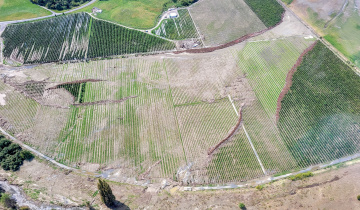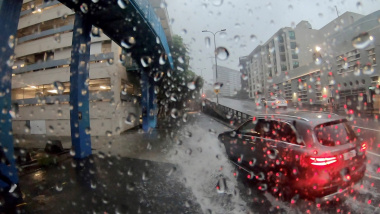Types of Guidance Tools
The Guidance Tools in this Toolbox come in three forms:
- Type I – General Information & Reference
- Type II – Model/Methodology Descriptions with Examples
- Type III – Messages for Improving Practice.
The first type of Guidance Tools is designed to provide background knowledge and complement other existing sources of information. The second type goes into more detail regarding the models and methods available that can be used to assess climate change effects. These Tools include sections on data needs, assumptions and limitations, and linkages through to other Tools in the Toolbox, including the Decision Tools described in the next section. The third type provides information on integrating climate change assessment information into the council planning and operations.
The tables below give a brief description of each of the Guidance Tools available in the Toolbox.
List of Toolbox Type I Guidance Tools
| Tool Name | Tool Reference | Primary Function |
|---|---|---|
| Urban environments and climate change (PDF 400 KB) |
[Tool 1.1] | Provides context for the whole of the Toolbox by answering some frequently asked questions. |
| General climate change information and guidance for NZ (PDF 227 KB) | [Tool 1.2] | Provides basic climate change guidance for NZ and information on the IPCC. |
| An introduction to risk assessment (PDF 558 KB) | [Tool 1.3] | Provides introductory guidance on basic risk assessment methods appropriate for use in setting priorities in terms of climate change issues of concern and the vulnerability of assets. |
| Urban environments and climate change – Statutory context (PDF 414 KB) |
[Tool 1.4] | Outlines key legislation that influences planning and infrastructure for urban environments, and where to obtain update information. |
| Sources of information, help and expertise & glossary (PDF 164 KB) | [Tool 1.7] | Key sources of existing climate change information for NZ and overseas (reports and web pages); plus a detailed glossary of terms used throughout the Toolbox. |
| Investigating urban growth to inform the risk assessment process (PDF 673 KB) | [Tool 3.4] | An outline of where to obtain relevant information, and uncertainties in predicting urban growth and change. |
| Climate change adaptation - key concepts (PDF 157 KB) | [Tool 4.1] | Identifies the many issues associated with preparing for and adapting to present-day and future weather and climate hazards in urban settings. |
List of Toolbox Type II Guidance Tools
| Tool Name | Tool Reference | Primary Function |
|---|---|---|
| Flooding assessment tools | [Bin 2.1] | A section of Tools describing methods for making climate change-based adjustments to rainfall data, and modelling future flood flows and inundation. |
| Sea level rise and storm surge assessment tools | [Bin 2.2] | A section of Tools describing the analysis and interpretation of tidal gauge data to determine extreme tide and storm surge levels, plus adding sea level rise and mapping potential coastal inundation. |
| Heavy rainfall induced landslides assessment tools | [Bin 2.3] | A section of Tools describing the data requirements (including information on geology, soils, assets and historic events) and modelling approach for assessing heavy rainfall induced landslide hazard. |
| Heavy rainfall and urban drainage | [Bin 2.4] | A section of Tools outlining methods for assessing climate change effects on stormwater and wastewater networks, including an assessment of current climate change provision in stormwater management guidance. |
| Supply and demand of potable water | [Bin 2.5] | A section of Tools describing methods for estimating present day and future potable water demand and supply for urban areas. |
| Other hazards (PDF 353 KB) | [Tool 2.6] | General information on the assessment of climate change effects on high winds, very high temperatures, snowfall, fog, lightning & hail and drought. |
| Climate change risk assessment good practice (PDF 1 MB) | [Tool 3.1] | Provides guidance on quantifying climate change risks, the treatment of uncertainty and how to make judgements about the tolerability of risk, to support decisions about the levels of protection that would be considered sufficient and appropriate. |
| Adaptation by design: impact of climate and land use change on the sizing of stormwater management devices (PDF 730 KB) | [Tool 4.7] | A tool to help design the size of stormwater retention devices based on scenarios of future heavy rainfall events. |
List of Toolbox Type III Guidance Tools
| Tool Name | Tool Reference | Primary Function |
|---|---|---|
| Managing information (including use of climate change check-lists) (PDF 365 KB) | [Message 5.1] | Explains the range of information that the practitioner needs to be aware of. |
| Keeping up to date (PDF 386 KB) | [Message 5.2] | Outlines the fast-moving nature of climate change information, and any key milestones. |
| Climate change - the long-term view (PDF 436 KB) | [Message 5.3] | Outlines guidance on timeframes for planning and decisions. |
| Adopting a balanced approach (PDF 541 KB) | [Message 5.4] | Discusses adaptation approaches and the basis for decisions on community responses. |
| Community resilience and sustainable development (PDF 488 KB) | [Message 5.5] | Describes some concepts and techniques used to assist in transforming communities towards greater resilience. |









